In recent years, natural gardens and landscape compositions have been particularly popular, the main elements of which are simple cereals, blooming plants characteristic of a particular region. There is no place for exotic cultures, but this does not mean that such a garden looks boring and not interesting. Among the simple and all familiar plants there are very interesting and unusual copies that are forced to admire and admire themselves. It is such a culture and is the grass of the Zaytiechvost - a representative of the family of cereals, fluffy and soft inflorescences of which cause them to feel and stroke them.
On the territory of Europe, this plant has long been a central decoration of the household plot, over time and domestic gardeners look at this simple at first sight of the plant.
In order to get a beautiful and healthy plant on its plot, we consider the features and description of this culture in this article, we note the use and rules for growing a haute in the open soil.
Features and Botanical Description Townships
Take tribute or Lagusus is a monotypic genus, which includes one single type of plant - the Lagurus is egg-shaped. This culture belongs to a large family of mattal or cereal. Culture taking in culture is used by about the 16th century and during this time gained great popularity and distribution as a beautiful ornamental plant. The territory of Mediterranean, Europe, East Asia and North Africa is considered a natural habitat of the habitat of lawn grass. In these regions, Lagurus can be found on the slopes of the mountains, on the sand dunes, in the meadows and forest edges.
The scientific name of this plant is the Latin word "Lagurus", and the haute of this Zlak is called the people. The definition of Lagurus occurred from two Greek words: "Lagos", which in the translation denotes the "hare", and "OURA" - the tail. Literally this plant can be called the "Tail of the Hare". This is due to the fact that after the dissolution of the pancake culture, a small, rounded, fluffy tail of the bunny resemble the bunny. For example, French gardeners call Lagurus "Rabbit's tail." During flowering, fluffy "bid" completely covers all the plant, which makes a bush look like a fluffy cloud.
Today, the cereal of the zaitrechvost is an element is an element of modern natural landscape design. He is trying to use both gardeners and landscape designers to make a plot more harmonious and original. In addition, this plant is considered not only a beautiful plant, but also dried flower, often used for fakes and floristics.
Town description:
- Zaitochivost or Lagurus is a two-year or annual decorative cereal, which is often grown on the household plots on a row with other representatives of the family: Timofeevka meadow, a bristle, a chumis, a stupor, a turf, Kovyl and others. In more southern regions, it is possible to grow this culture as a two-year-old plant, but in a temperate zone due to cold weather, the plant for the winter completely dies. In nature, the wild haute is distributed by self-sowing, so it can be attributed to perennials.
- This plant is a highly decorative cereal.
- The root culture system is strongly developed, is a tuber-like rhizome. Due to the powerful root system, this plant can be grown on dry and stony soils.
- The height of the cereal grass can reach about 50-60 cm, there are also low grades, for example, a nucleus that can grow only by 15-20 cm.
- Stems are dense and strong, light green, thick, hollow spikelets or inflorescences.
- The length of the spikes can reach about 3-4 cm.
- The bay flower is similar to a fluffy blizzard, which consists of long hairs. In shape they may be ovoid or cylindrical.
- The buggy inflorescences of this culture can be light yellow, greenish, white or light-purple shade. The color of inflorescence directly depends on the composition of the soil, illumination, climate. At the same time, if you want to cut the scenery of the hauteness for the driedstone, then you do not need to wait until the blizzles change the color from green to another.
- Blossom in the southern regions begins in the middle or late May, on more northern territories, belties appear only by mid-July or in August. The duration of flowering culture is about 2 months.
- Lagurus leaves elongated, flat, lanceolate. Coloring of a pale green leaf leaf with a small light chopping. Leaves in length can reach 20-25 cm.
- After a bunch of blurred inflorescences, small seeds begin to ripen in spikes, which are used to breed the hauteness. If the seeds do not collect, then in warmer regions, this cereal begins to multiply by self-sowing.
- Seeds small, light brown or yellowish shade, have an oblong shape.
- This cereal culture does not tolerate cold, so it is most often grown as an annual.
- Lagurus has good resistance to pests and diseases.
- Take trail in landscape design is used to decorate stone gardens, mixtorers, rocaries. Great for the framing of garden tracks or borders, especially low grades. You can land as soluters against the background of lawn or with plants partners.
- As noted above, many gardeners grow such a cereal culture to receive a driedstone, which in the further cold winter can decorate the room. In addition, this plant loves the children very much, since fluffy pellets-tails can be painted in various colors, thereby creating bright and unusual compositions. Dried shoots of various colors are also used in floristic for decorating and drawing up bouquets.
Characteristics of Village Towns
The hauteness is a monotypic genus of cereal culture, which consists of only one species - the ovoid Lagurus. However, each gardener, if desired, can stop its choice on one of the most popular varieties of this plant, which, unfortunately, is also not so much. Consider the characteristics of the ravine varieties.
- Grace Lagurus "Hare Tail". One of the most popular varieties of this decorative cereal plant, which is used by gardeners to decorate the site. It is a cereal grass, which can be in height to reach 20-30 cm, which allows the use of a hauteness of this variety as a border culture. The plant is formed by reprehensive light-green stems, on the tops of which blurred inflorescences in the form of spikes bloom. Egg-shaped inflorescences up to 4 cm long and 1-2 cm wide. Color bullets gray-white.
- Sort Town "Steppe Wanderer". Another representative of the type of decorative cereal, which serves both to decorate the garden area and to obtain a driedstone. The height of the bus can reach 45-50 cm. Leaves are small, oblong, lanceal form, slightly covered with input. Break-shaped inflorescences are 3-4 cm, round or egg-shaped. At the beginning of the flowering of a light green tint, at the end becomes white. The flowering of the Lagurus of this variety begins in July and lasts until the end of the summer. The plant is cold-resistant, has immunity to pests and diseases.
- Sort Takers "Nanus". The lowest, compact variety of decorative cereal culture, which in height can maximize 15-20 cm. Often used for stone gardens and framing garden tracks.
- Sort Zaitovost "Lesya". It is a multi-section bush, which in height can reach approximately 25-30 cm. The flowering begins in July or in August and lasts until the first frosts. The inflorescences of ovoid shape, very thick and dense, completely covered with hairs. The inflorescences of a grayish-white shade, in length reach 4 cm.
Taking Take Takes: The most common ways
Take tricks, landing and care for which are quite simple, you can do without any problems on your own at home. To do this, there is no need to study some complex processes and to get a long time to the procedure, it is enough to know how this culture is multiplied. For breeding, only one method is suitable - seed, which can be used in two versions. In the first case, the planting material can be seen directly into open ground, with a different scenario, you can use a seaside. Consider the characteristics of each method.
Cultivation of seeds from seed
- You can propagate this cereal culture directly from seeds in mid-May, when air and soil warm up well.
- The planting material can be assembled independently, if there is already a taper in your site. To do this, it is necessary to wait for full ripening of inflorescences, after which they are cut and allowed to dry. Fluffy tails are cut when they start shrust and dry. After the inflorescence, it is necessary to put in the shady place to their complete drying. Next, belties crushed hands to separate the seeds and fluffy part. To fully remove extra particles, type seeds in the hand and at a distance of 20-30 cm from the surface to crumble on the paper, simultaneously blowing on them. Fluffy part will fly away.
- Seeds of this plant have a very good germination and can be stored for a long time in paper bag.
- If you decide to plant such a decorative grass for the first time, then the plant seeds can be bought at any garden shop.
- First of all, it is necessary to prepare a bed at the selected place in advance. For this, the site is thoroughly looped, then frozen and flushing with robbles.
- The seeds of the ravine can be inserted into the ground to a depth of 0.5 cm, and you can make small grooves on the same depth and seed the seeds in them.
- After that, the soil on the garden needs to be well sealing and drop. It is also important to hide your crops abundantly. Many gardeners are recommended to climb the bed with the seeds of the suspension with a thin layer of humus. So you will prevent the evaporation of moisture and speed up the germination of seedlings. To grow sprouts of this culture, it is very important to maintain good humidity.
- To speed up the germination process, it is possible to cover the garden with nonwoven material. In this case, after 2 weeks, strong shoots will appear together. And in July you can observe the bloom of the cereal.
Breeding taking a seaside
- The seeds of the Zaytsechnaya seedlings are sown around in early April.
- To do this, first of all, it is necessary to prepare containers or drawers with drainage holes. After that, they are filled with a nutritional substrate consisting of ground and coarse sand. The soil mixture must be predetermined in the oven for 30-40 minutes to disinfect the soil.
- After that, the soil is carefully moistened and seeds seeds. It is necessary to do this evenly with a small distance between the seeds. If you are sowing the planting material in small pots, place 3-5 pieces into one container.
- From above, the seeds are sprinkled with a thickness of 0.5 cm.
- Next, it is necessary to build a small greenhouse, for which the boxes are covered with film or glass. This will ensure faster germination and obtaining strong seedlings.
- Since the seeds of the raceshore have a good germination, a lot of planting material can be obtained at a time.
- After 2 weeks, the first sprouts will appear. At this time, the package or glass must be removed. You can plant in the open ground seedlings in mid-May when the soil warms well.
Landing Township in Open Soil
The landing of the decorative cake of the Town will not cause difficulties even at novice gardeners. It is enough to comply with all the stages of preparation and landing and in the end the plant will delight you with its bright and unusual appearance. Although Lagurus is considered an unpretentious annual cerebral, but the preparatory work before landing still will have to be prepared. After all, the full growth and quality of inflorescences directly depends on the place of landing and the preparation of the soil, as well as from a healthy planting material. Consider the characteristics of each stage.
Stage 1. Acquisition and preparation of the landing material of the Take track
- First of all, it is necessary to take care of the purchase of planting material. It may be the seeds of the ravine, which are sold at any garden shop. Seeds can also be collected independently with the coastle of the Lagurus.
- For territories with a temperate climate, it is best to take care of the acquisition of seedlings or seedlings of the Take trail, since planted seeds in the ground will simplenly sit down and seedlings will grow less strong. In this case, the seedlings can be raised independently. As an option, the finished planting material in the form of seedlings in individual peat pots can be bought in nurseries that are professionally engaged in breeding plants.
- You need to buy a horse in the spring before landing seedlings in an open ground.
- Before purchasing planting material, decide on a specific grace. For landing along the garden tracks, the Nanus variety is ideal, and it is better to buy tall grades to get a beautiful dryweight, for example, hare ears or a steppe wanderer.
- Before buying, it is recommended to carefully check the state of the seedlings. The stalks and leaflets should be elastic and fresh, they should not be yellowed or fired. The soil in the pots should be clean, without signs of mold.
Stage 2. Selection of a place for landing seedlings
- Zaitrechvost or Lagurus prefers to grow at open solar places where enough sunlight.
- It is allowed to land the seedlings of culture in a small half, but in this case you should not wait for beautiful and lush inflorescences, and the height of the decorative grass will be less.
- If the hauteshop is grown for floristics, then it is important to choose a sunny plot on a small hill, as this plant does not carry out water stagnation.
- The choice of landing space is determined depending on the planned garden composition. More short-lived races can be planted on alpine slides or along borders, high bushes are perfect for mixtures and rocaries.
Stage 3. Choice and soil preparation for landing
- This plant is an unpretentious cerebral, which can grow in any soil, both light and in heavy.
- In nature, the hautest can grow even in the steppe and on the stony slopes. However, to obtain beautiful cooks with large and lush infloresions, it is recommended to plant seedlings in fertile and drained soil, which does not delay moisture and contains a lot of nutrients.
- Before boarding, the selected soil section is carefully overhaul and dissolve, you can also add slightly humid and coarse sand.
Stage 4. Landing technology for seedlings
- Landing the seedlings of the Take trunk in open ground is recommended to be carried out in May when the soil is completely warm.
- Next, it is necessary to abundantly pour a pot with seedlings of the plant to facilitate their further extraction. Zaytiechvost does not like transplants, so it is necessary to plant seedlings with a room of land on the roots.
- It is necessary to make landing wells on the prepared plot of land, the size of which should be a little more of the root system of the seedlings along with the land of the earth. The distance between the wells should be approximately 15-20 cm.
- Gently get one sighter from the drawer and, together with the soil, move it to the landing well, after which it is gently sprayed with soil.
- After planting, young bushes need to be abundantly, and the surface of the earth around them is closed by humus.
Saviter cultivation agricultural machinery: secrets and nuances of care
Take tribute or Lagurus ovate is considered an unpretentious plant that requires a minimum of care. Consider the most important features of its cultivation after landing.
- Watering. This culture of drought resistant, however, in the hot season, it is imperative to watered often and abundantly, otherwise the inflorescences will be small and unrelated. If you grow a bay in the home at home on the balcony or terrace, it is recommended to carry out daily watering of landings.
- Loosening and mulching. Several times per season it is necessary to loosen and pour the soil around the plants to ensure the saturation of the earth with oxygen. You can also periodically sprinkle a mulch from the humor, thereby fertilizing the soil and protecting the roots from excessive evaporation of moisture.
- Podchar. Each 10 days during the active vegetation of the seedling seedling, it is necessary to fertilize a cowboy solution, which is pre-divorced in water in a ratio of 1 to 10. In the period of active growth, plants can be fertilized twice for the season.
- Trimming. If you grow this plant for decorating and landscaping the site, then it is recommended to cut out the shockless inflorescences to stimulate the growth of new ones. If the bunches of cereals are grown to obtain a driedness, the spikelets are cut until the moment of complete ripening until the inflorescence will change its color.
- Fighting diseases and pests. Zaytsechvost has a good immunity to disease and pests, so you do not have to worry about the health of cereals.
Zaitachost - Picture
A beautiful and gentle haute will become an excellent addition to any landscaped plot, harmoniously fit into any flower bed and mixtore. With minimal work and simple care, this plant will delight you with its original appearance and decorate the house in winter with fluffy and delicate sprigs.

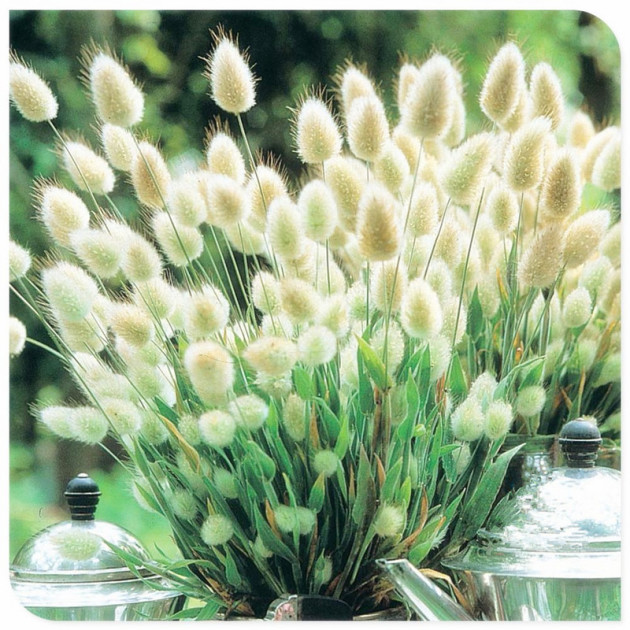
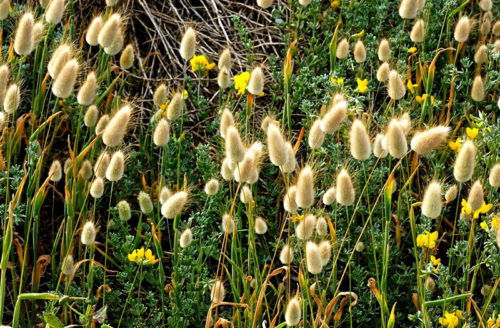
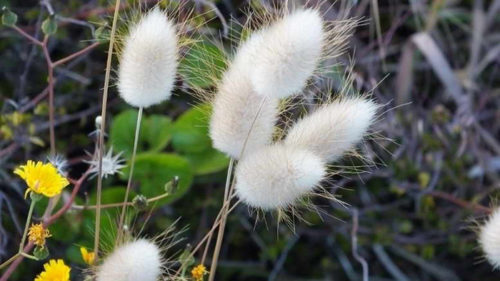
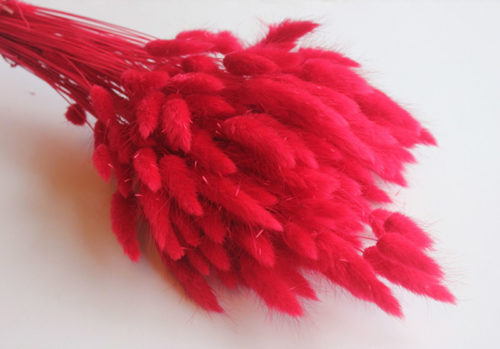

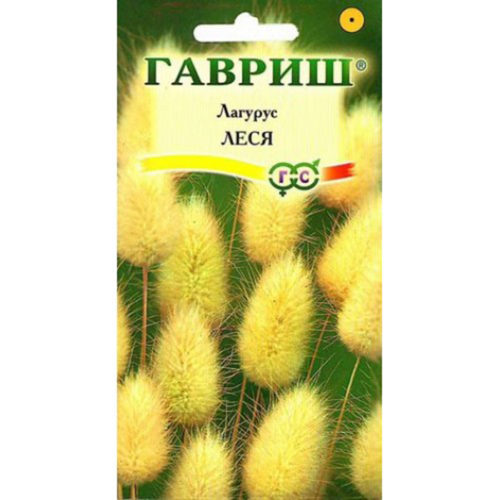
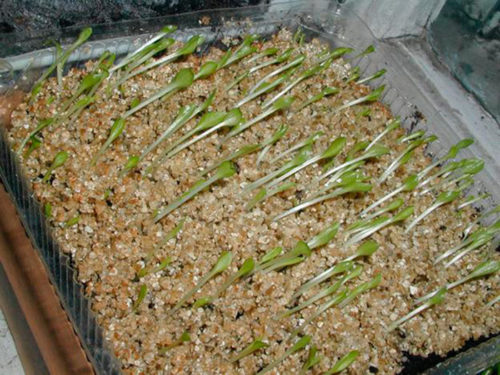


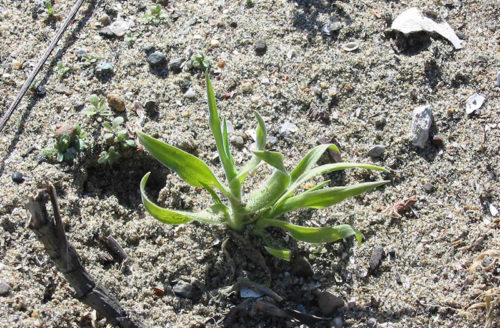



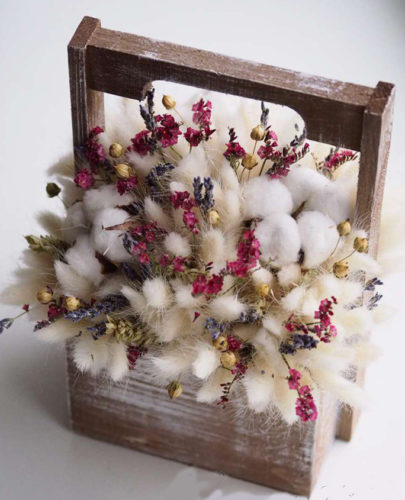
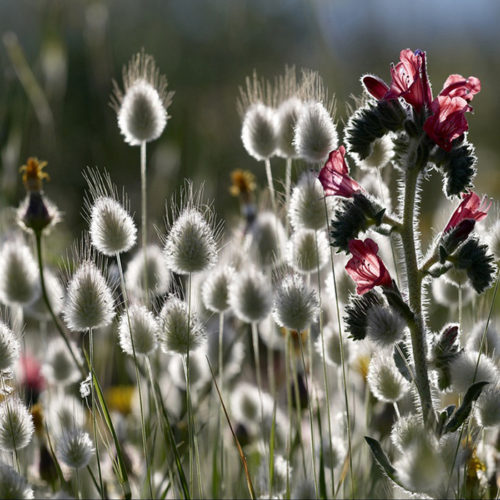












 Start a discussion ...
Start a discussion ...